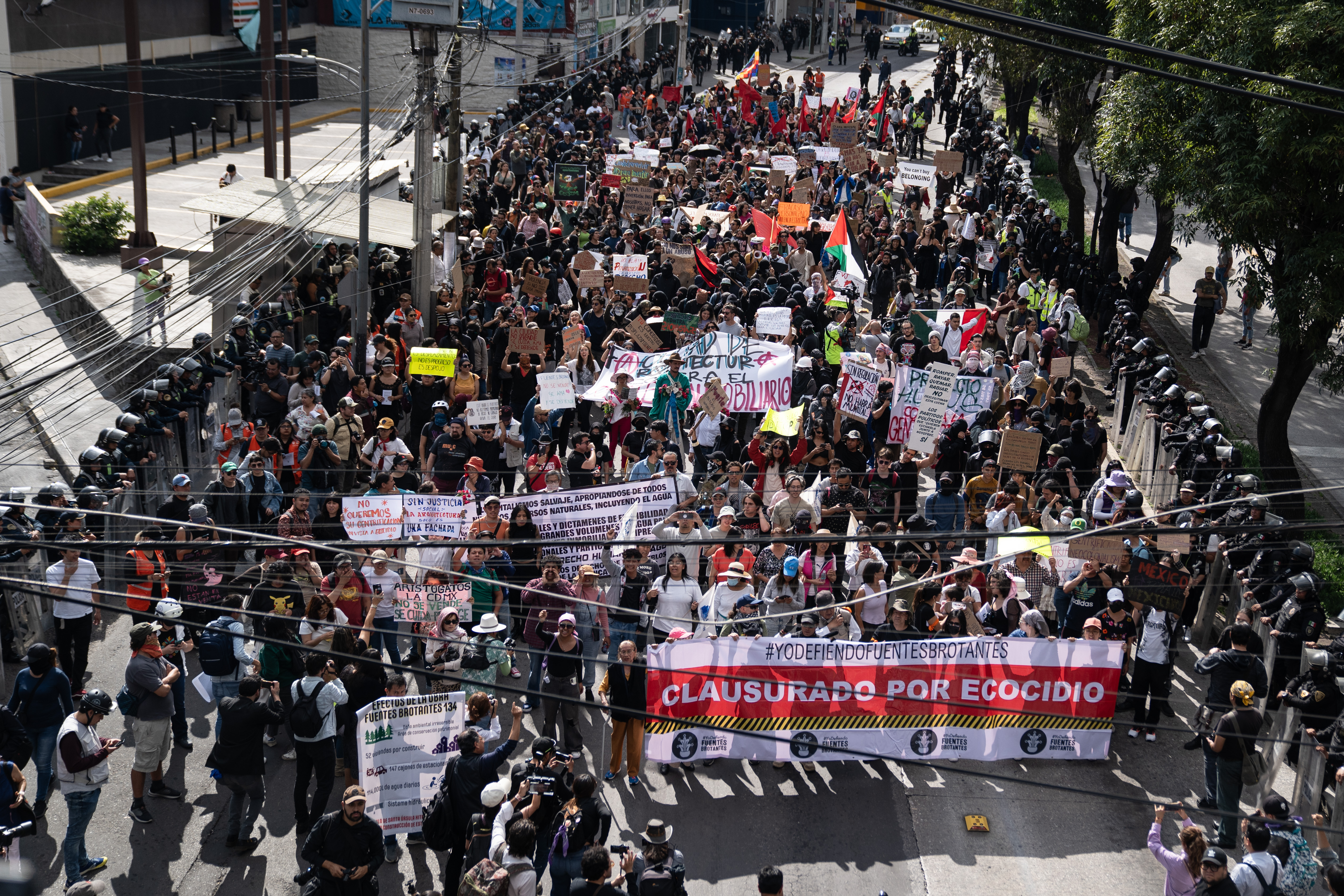- Anti-gentrification activists have called for protests in Mexico City on 26 July and 9 August, and appear angered by the large number of US citizens living there
- Based on similar recent protests, the city authorities will probably struggle to prevent acts of vandalism against public and private property, particularly targeting US companies, close to protest sites
- Recent government efforts to address protesters’ concerns seem to be encouraging activists, rather than placating them
Activists in parts of Mexico City are becoming increasingly vocal in their opposition to the presence of US citizens there. An anti-gentrification group has called for two protests against ‘dispossession, gentrification [and] imperialism’ on 26 July and 9 August. They have said that US citizens are driving this. This follows two violent demonstrations over the same issue earlier this month. A rally on 4 July in Condesa resulted in the ransacking of nearby businesses. And on 20 July, protesters in Tlalpan vandalised a museum, bookshop and metrobus station and chanted anti-US slogans.
Further vandalism is likely during the upcoming demonstrations. The authorities will probably deploy a large police presence for these, but they seem unable to fully contain activists and prevent acts of vandalism targeting businesses around gathering points and along march routes. Still, while protesters and some residents more broadly will probably verbally harass foreigners they perceive as contributing to gentrification, they do not currently seem intent on physically harassing foreigners.
Protests planned for 26 July and 9 August
The Frente por La Vivienda Joven activist group has called for a third anti-gentrification protest this month. It is scheduled for 26 July at Hemiciclo a Benito Juarez, in Alameda Central in the city centre. Organisers have called for participants to gather at 1400hrs and then march to the nearby US embassy on Paseo de la Reforma. While they have not announced an exact route, they will probably march along Avenida Juarez and Reforma to reach the embassy. If recent demonstrations are any guide, several hundred people will probably attend. See the attached map for the locations mentioned in this report.
According to Proceso, a local outlet, activists also plan to gather on 9 August. But no further details are publicly available from Frente por La Vivienda Joven. The most likely location for this and any other future demonstrations would be neighbourhoods with a high number of short-term rentals or high rental prices; these include Condesa, Coyoacan, Roma and the city centre. Some isolated instances of verbal harassment away from protest sites are also likely in these areas, particularly for citizens who do not speak Spanish or support foreign or ‘gentrified’ businesses.
During the demonstrations, activists will probably seek to vandalise US businesses and verbally harass any people they suspect are US citizens near protest routes. This is because they perceive the US as driving gentrification. During both previous protests, activists chanted, put up posters and graffitied anti-US slogans, particularly focused on developments linked to the 2026 FIFA World Cup (to be jointly hosted by Mexico, the US and Canada). Activists also destroyed a roadside advert for Walmart on 20 July.
The authorities seem unable to prevent vandalism during such protests. While they have not announced any measures yet, a large police presence is likely for both protests; local press outlets suggest 400 anti-riot officers were deployed for the protest on 20 July (compared with 500 protesters). As they have done in the past, the authorities will probably also construct temporary walls along protest routes. But we anticipate some activists will probably still try to graffiti and smash windows of nearby businesses where police presence is weakest.
Activists encouraged by new government measures
The government seems unable to placate activists. Last week, the head of the Mexico City government announced a 14-point plan to address gentrification. This included proposed laws to regulate rental prices and to prevent locals from being displaced by short-term rental properties. But this has failed to deter activists from mobilising; they seem to view it as insufficient, according to local media reports. Indeed, our monitoring of rhetoric on social media indicates that some activists have interpreted the government’s concessions as only a symbolic reaction to previous demonstrations.
We anticipate that activists will probably seek to stage targeted, confrontational demonstrations outside US-linked businesses or real estate projects in the coming months. So far, protests have been focused on neighbourhoods they consider gentrified or at risk of gentrification. In our understanding of their motivations, activists seem emboldened to protest directly outside businesses or building projects they consider to be contributing to gentrification as well. Based on activists’ rhetoric, we have identified several triggers for short-notice confrontational protests:
- The announcement of new large luxury housing projects aimed at foreigners
- High-profile cases of residents evicted for short-term rental renovations or new developments
- The planned opening of businesses activists consider to be gentrifying, such as high-end cafes, restaurants, co-working spaces and gyms
- Instances of perceived disrespectful behaviour by foreigners are shared on social media
- Activists perceive that the city government is courting foreign real estate investors
We assess that there is little scope for protests to attract more than a few hundred people at a time. And we have seen no indication that activists intend to broaden their targeting of US businesses outside of the areas where protests have recently been taking place. While gentrification seems to be a key issue in certain neighbourhoods popular with foreigners, citizens elsewhere in the city, for instance, in low-income neighbourhoods, do not seem interested in the issue.
On current indications, hardline activists are unlikely to be satisfied by any city government proposals to address gentrification; they have expressed broader grievances about inequality and corruption. But should the government greatly increase oversight of housing in the city, propose structural housing reforms and encourage community participation in urban planning, we anticipate that non-hardline activists would probably be less willing to protest.
Image: A general view of protestors against gentrification as they march on July 20, 2025 in Mexico City, Mexico. Photo by Toya Sarno Jordan/Getty Images.




